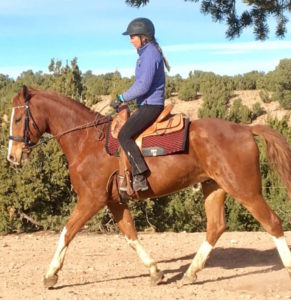
Katrin Silva
Cayuse Communications has published many articles on horses’ learning processes. We’ve featured pieces on optimal learning and long-term potentiation, the role of attention, dopamine/reward cycles, and negative reinforcement.
Our article on the cons of clicker training drew a lot of attention from the training method’s fans and detractors alike. The post and the subsequent article by our friend, Tim McGaffic, highlighted the pitfalls of following one method or another.
Having an appreciation of how horses learn is vital to owners and riders. We know that horses do not learn strictly by perking their heads up and following the direction of a human teacher. Like us, horses gain knowledge through a vast array of strategies. Some are intentional, like horse-human interactions. Some are more subconscious.
Here’s an overview, with help from “Understanding Learning: Theories and Critique” a chapter in University Teaching in Focus by Lynne Hunt and Denise Chalmers. Keep in mind that although we’ve made great strides in understanding learning processes, brainwork (incorporating information and experience into memory and knowledge) is a relatively new and constantly evolving field of study.
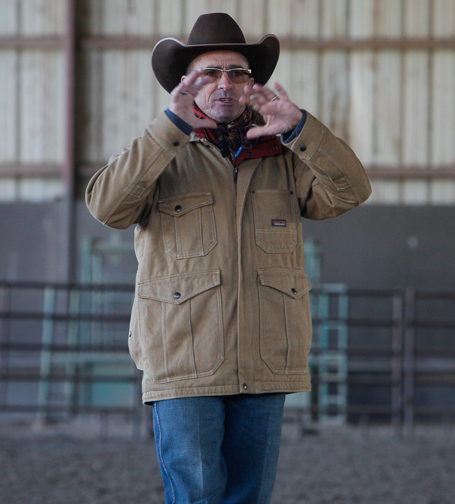
Warwick Schiller uses a variety of training methods
Behaviorism is the school of thought put forth by Ivan Pavlov and BF Skinner and is also thought of as learning by association. This type of learning involves behavior shaped and reinforced toward a target outcome (clicker training and pressure-and-release). It uses incentives, rewards, and penalties, and emphasizes an all-knowing teacher who controls the learning environment.
Many of the following schools of thought argue that behaviorism is less about learning and more about rote performance of behaviors. Learning by association, they say, is one small, isolated element of the grand learning experience.
Cognitive science
This group of researchers believes that brains develop concepts, “flexible frameworks,” on which we incorporate knowledge and experience. They study memory, attention, and argue that learning is necessarily multi-faceted.
Cognitive scientists are interested in how the animal develops by maneuvering in the world, not just how it is able to recall and repeat requested behaviors. They study how subjects store, receive, and process information.
- How does a foal think differently than a mature horse?
- How does an isolated horse approach challenges differently than a horse kept in a herd?
Researchers in this field may define intelligence as “the success with which an individual selects, adapts to, and shapes the real-world environment by integrating various practical, analytical and creative skills.”
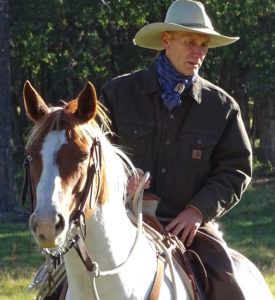
Dr. Steve Peters
Neuroscience
This relatively new area of study considers the function of the brain in the learning process. We know, for instance, that the dopamine/reward cycle can be tightly knitted into training sessions. We also know that dopamine release is boosted when there is greater uncertainty and greater unpredictability associated with the learning.
Researchers have also found that the brain has mechanisms that allow learning to occur when errors are made (ie, we learn from our mistakes) and that dwell time and practicing are natural parts of the learning process.
Social Learning & Situated Learning
These researchers recognize the importance of social settings in horses’ capacity to learn from other horses and even other species. Animals observe and copy behaviors. Examples: horses learn where the watering hole is and they learn to stand head to butt in order to tail-swish the flies away for each other.
Undoubtedly, horses learn through their environment. Wild horses are reliably more agile than stall-bound horses because their surroundings provide often varied and challenging terrain. Domestic horses, meanwhile, adapt to motor-sensory input specific to human interactions.

Dueling experts rarely result with progress or common ground
Can we learn without following?
As you might imagine, behaviorists, neuroscientists, and cognitive scientists have gotten pretty tribal as they ascribe adamantly to their way of thinking. The Clicker Training article perfectly highlighted the divisive nature of the discussion. Before long, there were dueling experts on both sides, touting their “truths.”
But it doesn’t need to be my way or the highway. I spoke with Curtis Moore, a horseman who wrote his Masters thesis on the process of scientific mediation.
As a community of horse owners and life-long learners, we can build a framework of understanding that will make it easier to navigate these discussions as well as how we ultimately work with horses:
- Be aware of the biases of experts. Even the best science can be influenced by ulterior motives of funders, subconscious or deliberate bias of the researchers.
-
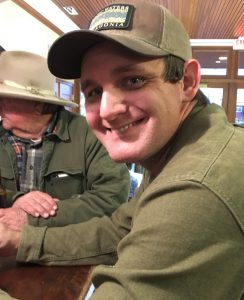
Curtis Moore, attorney and horseman
Positioning dueling experts on each side of the divide rarely results in greater understanding or discovery of common ground.
- Some “junk science” (not peer-reviewed and/or funded by an entity with a vested interest in a result that favors their interests) is actually loaded with value judgments, and only disguised as “science” to avoid the appearance of self-interest or ideology.
Read about the hierarchy of evidence here.
When it comes to moving forward with our horsemanship, BestHorsePractices is interested in offering a body of knowledge and calling out personal biases and political opinions. Groups like ours, Moore writes, can assemble three piles of study as we embark on a communal fact-finding mission:
- Areas of agreement
- Areas of disagreement
- Areas for which we need more information
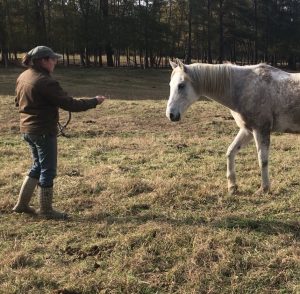
Amy Skinner
Instead of a forced, black and white result (“Yes, clicker training is great” or “No, clicker training stinks”) we can find satisfaction in “Maybe.” We can broaden our field of knowledge, for instance, by acknowledging clicker training as one of many ways in which we can communicate effectively with horses. In this collaborative environment, we can strive to, as Moore says:
Let opinion be formed by science instead of science being formed by opinion. The most valuable place we can be as horse people engaging with science is where we acknowledge that there are some things we know, some things that are always being refined, and things are subject to change.
We are all essentially trying to get to the same place, where we’re communicating effectively with horses. There may be different ways to achieve that goal. Civil conversations with other horse people whose views we don’t necessarily share are an important way to advance our goals.
Enjoy your horse work, talk with folks who have different opinions, and don’t be afraid to get messy out there.
Thanks Maddy. Good points. I’d like to add something that always came up for me as a body and movement therapist when people asked for instance, “Should I see an MD, a chiropractor, an acupuncturist, a massage therapist….?” A lot depends more on the skill and experience of the practitioner than the specific modality. There are a lot of bad and poorly informed practitioners. Seek out a magician.
So I view clicker training as another tool in my tool box. We’ve all seen fantastically successful “magical” horse (or dog, or…) trainers where we asked, “What made you decide to do X, right then?” “How do know how long to do X?” “How do you know how much pressure, performance, or… is enough?” That is the ART. Having a large and varied tool box is like knowing your scales and arpeggios so you can improvise jazz. I don’t really want to know if rock is better than jazz is better than classical… I want to know, Can you play music?
Conversely, any tools can be applied badly. Artlessly. Like the woman I mentioned in another comment who couldn’t understand why her dog with the electric collar didn’t come when she pressed the button. She had the tool. We’ve all seen someone who endlessly chases a horse in a round pen with zero communication or result. Is round penning bad? One needs a large and varied tool box, AND know how to use the tools. ART.
Hi Katrin, I like this article better than the clicker one! I agree there are many ways to look at horse training and we all have the same goal of creating a harmonious partnership with our horses based on good communication. And a good way of doing this is to learn as much as you can about animal training and how animals learn, the science and neuroscience behind it, the species ethology and cognition and everything else you can. However I have to suggest that your description of behaviourism mischaracterises what it actually is. Behaviourism covers learning theory which includes the theories of Pavlov & skinner as you say and this describes how all animals learn. All natural horsemanship principles are based on learning theory whether the trainer knows it or not. All animals learn from the same principles. Learning theory does not need an all knowing teacher who controls the environment, I’m not sure where you got this? Research experiments often do but learning theory is happening all the time in practice, it’s happening with every interaction you have with your horse and all the interactions the horse has with other horses and its environment, it doesn’t just happen in a laboratory setting.
You have social and situational learning seperate to behaviourism but it is still behaviourism principles that allow learning to occur from situations eg horses that face their bums to the driving rain is an example of negative reinforcement. Learning from each other still has reinforcers and punishers that change behaviour.
Neuroscience also isn’t about a different way of learning it’s just looking at what happens at a chemical level inside the brain during learning but that learning is probably still classical conditioning or operant conditioning.
I don’t know what schools of thought you mean when you say ‘it’s less about learning and more about rote performance of behaviour?’ Could you clarify? Because to most people it’s the very essence of how animals learn. And I believe this page is a big advocate of negative reinforcement which is described by behaviourism and I believe we all agree the horses are learning.
I do like how this page presents evidence on many topics and I’m forever a student of the horse. I think the clicker article was so controversial because it had many factual errors and statements that weren’t accurate or backed up by research. I don’t think clicker is right or wrong but it can be a valuable tool in our horse training and it would pay for people who don’t understand it to do some research and have it in their toolbox if needed.